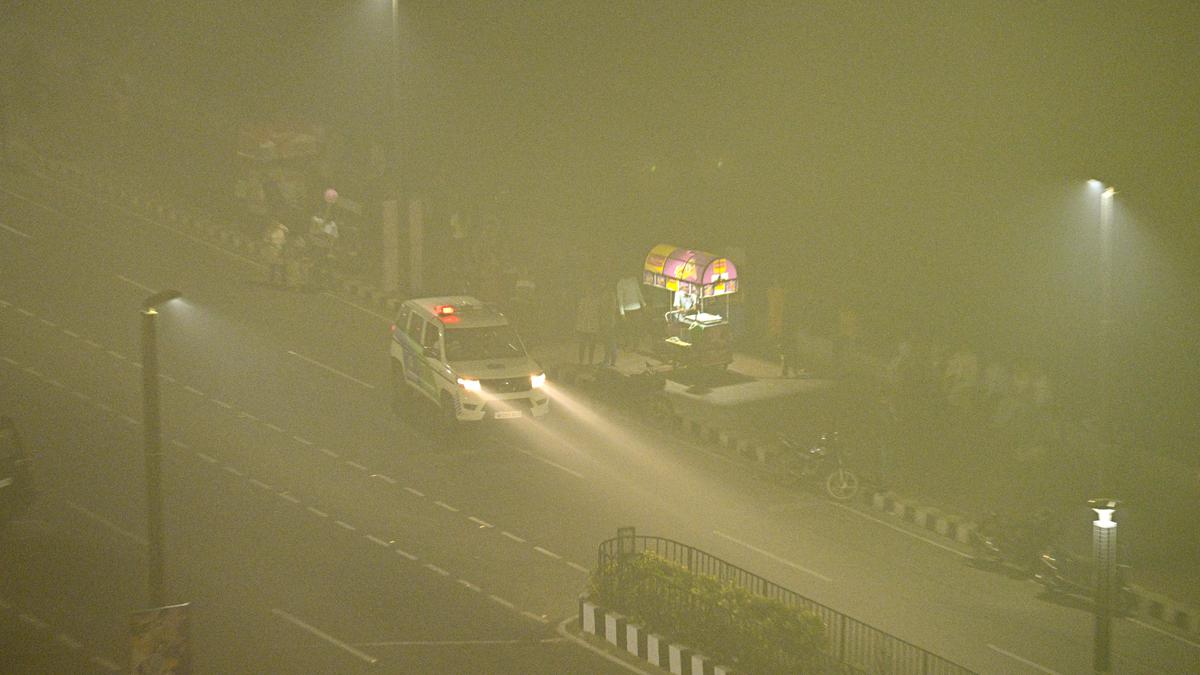
Air Quality Index in Visakhapatnam deteriorates to ‘very poor’ after Deepavali festival
The Hindu
Visakhapatnam saw heavy smog due to fireworks on Deepavali, with AQI level at Red (very poor) risk level of 322. APPCB attributed this to fireworks, high humidity, and inversion factors. Firecracker traders said weather was favourable, enabling them to earn good money. IMD director said no adverse weather conditions were seen before Deepavali.
Visakhapatnam was the only city in the State (Andhra Pradesh) to join the list of polluted cities in the country on Monday (November 13) with heavy smog in the air due to people burning fireworks to celebrate Deepavali on Sunday (November 12).
According to Central Pollution Control Board (CPPB) real-time data, the city’s Air Quality Index (AQI) level is 322 at 7 p.m. on Monday. The 322 is the Particulate Matter 2.5. The highest was 344 between zero hours and 1 am (midnight). This is indicated as the second highest risk level marked as Red (very poor- between 300 and 400). The first highest risk level is Maroon Red (severe - above 400).
Andhra Pradesh Pollution Control Board (APPCB) officials attributed this `Red’ category AQI level to Deepavali celebrations and weather conditions.
An APPCB scientist told The Hindu on condition of anonymity, “We have rarely seen Red category AQI levels in Visakhapatnam so far. We are also analysing data on air pollution levels by installing manual data collection devices at nine locations. We can reveal the analysis by Tuesday. But, according to our CPPB’s real-time data, we have seen AQI’s Red mark since 3 p.m. on Monday (it was 224 at 3 p.m. on November 12), and it will hopefully come down by next day.”
The scientist further said that usage of high volume of firecrackers, high humidity levels in the air, and inverse conditions in the atmosphere could be the factors behind the Red category AQI in the city this time. Inversion factors are the blocking of cold winds in the air. This blockage is due to the obstruction of cold air filled with smoke and micro particles of crackers and chemicals used in firecrackers, the environmentalist explained.
This apart, Visakhapatnam has only one CPPB’s CAAQMS (Continuous Ambient Air Quality Monitoring Stations) station. It is located in dense traffic at the Dwarakanagar. This can not be a representative of the whole city when compared with cities like Delhi, which has 40 such stations, the scientist added.
On the other hand, firecracker traders said that this time the weather was favourable for their business. So, they were able to earn good money from this Deepavali special business due to clear weather conditions unlike previous years except during the COVID 19 period. This was a good sign for both the merchant and the customers.

When fed into Latin, pusilla comes out denoting “very small”. The Baillon’s crake can be missed in the field, when it is at a distance, as the magnification of the human eye is woefully short of what it takes to pick up this tiny creature. The other factor is the Baillon’s crake’s predisposition to present less of itself: it moves about furtively and slides into the reeds at the slightest suspicion of being noticed. But if you are keen on observing the Baillon’s crake or the ruddy breasted crake in the field, in Chennai, this would be the best time to put in efforts towards that end. These birds live amidst reeds, the bulrushes, which are likely to lose their density now as they would shrivel and go brown, leaving wide gaps, thereby reducing the cover for these tiddly birds to stay inscrutable.












